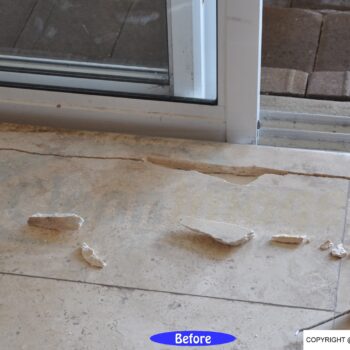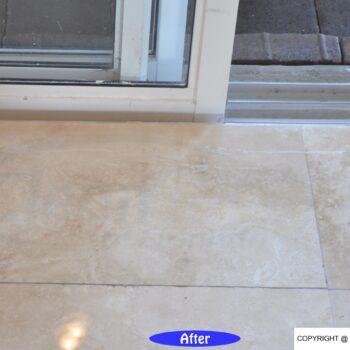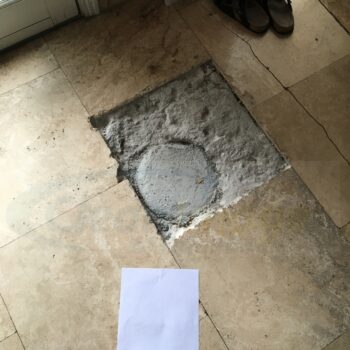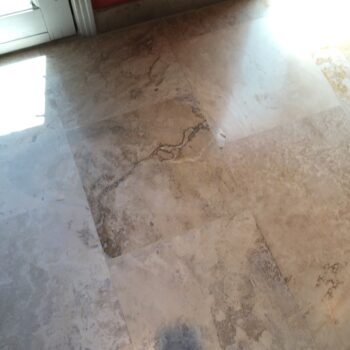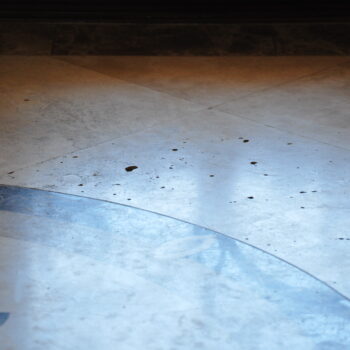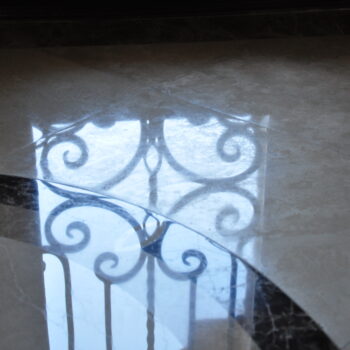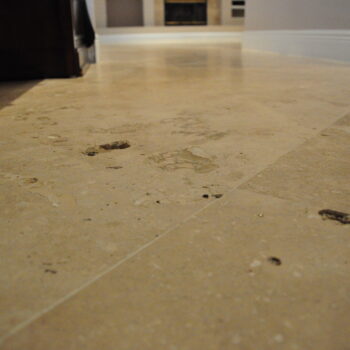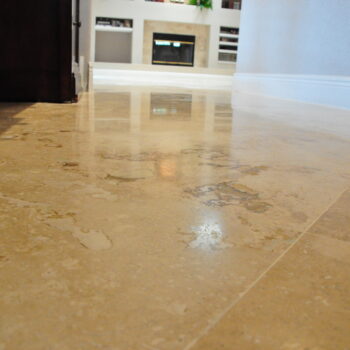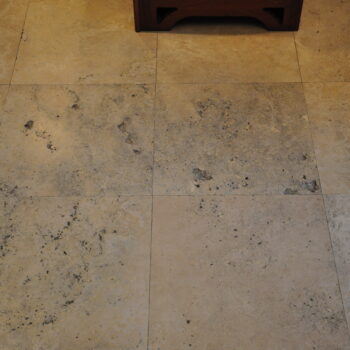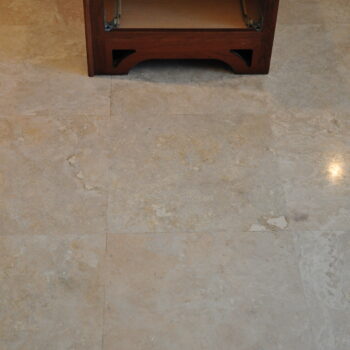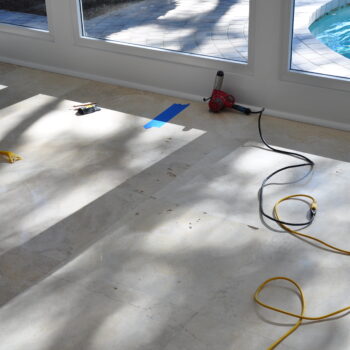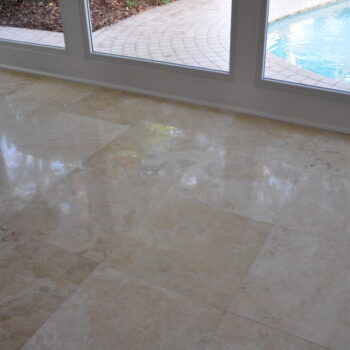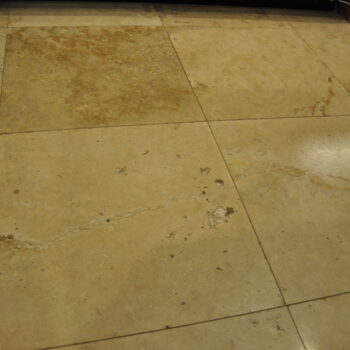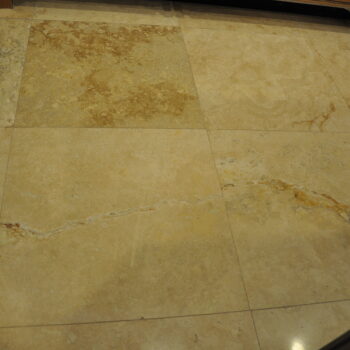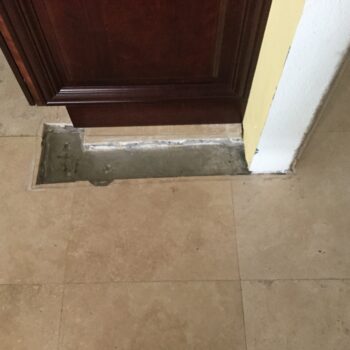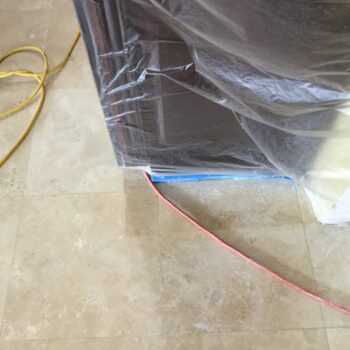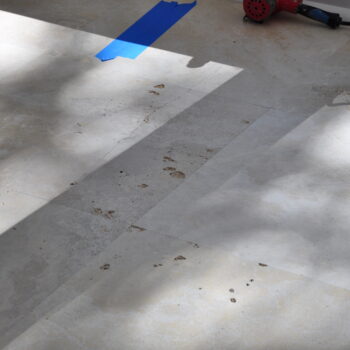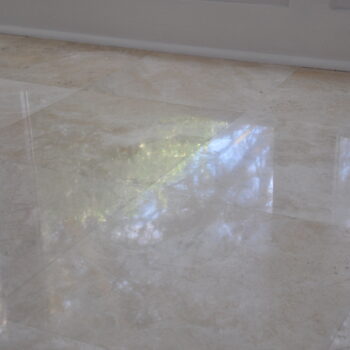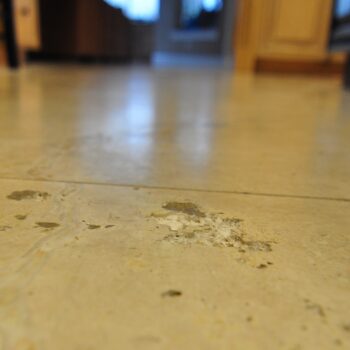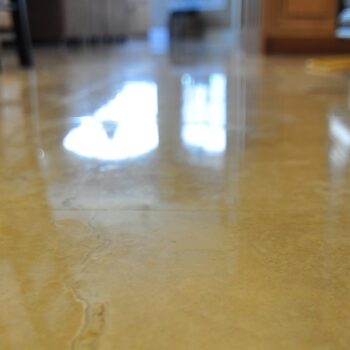Travertine and holes go together. We provide filling and repair your holes like they were never their, and epoxy resin glues are stronger than the travertine, so you do not have to worry about the same holes opening again. We offer different materials to fill Travertine holes and different levels of repairs depending on your travertines’ level of finish.
Travertine Hole Repair
So here we have a large hole that opened up when broken pieces fell out. We were able to reset the pieces in epoxy, fill any remaining voids and provide a level 5/5 repair by grinding and finishing the area. A Level 5 out of 5 repair is where we are setting new pieces, or overfilling an area with epoxies, and with larger areas this may be multiple colors as to mimic the natural stone color, and then using a light grinder and leveling the entire area being repaired.
So this is more than a simple hole repair. An entire travertine tile was broken out to remove. In doing so, all the edges of the good tiles surrounding the removed tile were damaged. With a square edge, factory filled, butt install installation, we find this common, where in someone’s best interest trying to repair one problem, they create another problem. All the surrounding tile edges were badly chipped. Since the owner did not have any spare tiles, we matched as best we could the color, and reset a new tile. Then we used small pieces of travertine and set them with epoxy in all the larger voids remaining. Any remaining gaps we fill in with color matching epoxy. After cure we then ground flat the entire area. We then refinished to match the surrounding areas.
Formal entry foyer and kitchens can look dirty even when cleaned when holes open up causing shadows that look like something is on your floor, until you go to pick it up and realize that it’s a hole.
When Travertine holes are properly repaired, they will not look like repairs. When filling travertine holes, it is important to match as close as possible to the surrounding Travertine colors.
Travertine’s Achilles heel is that voids within the travertine tile will get exposed and open when subject to abrasion from foot traffic, pivot points like in front of sinks and from chairs rolling or sliding back and forth. The size and depth of holes can vary from tile to tile, and even within the same installation in a high wear area where one tile will have no holes and the tile next to it is full of holes.
Holes can be repaired using epoxy, polyester resins, traverfill and cementitious fillers to strengthen and consolidate and match the surrounding travertine finish. Determining which filler to use depends on how many holes to be filled, level of gloss to match surrounding Travertine and current conditions and use of the floor.
Holes in Travertine are a common occurrence. They can form when the thin layer of stone above the natural voids in the travertine breaks or wears through exposing the hole. This can often happen where chairs are rolled or in high traffic areas. Filling Travertine holes can be accomplished with resin based or cementitious based fillers.
Holes in Travertine are a common occurrence. They can form when the thin layer of stone above the natural voids in the travertine breaks or wears through exposing the hole. This can often happen where chairs are rolled or in high traffic areas. Filling Travertine holes can be accomplished with resin based or cementitious based fillers.
So this is more than a simple hole repair. An entire travertine tile was broken out to remove. In doing so, all the edges of the good tiles surrounding the removed tile were damaged. With a square edge, factory filled, butt install installation, we find this common, where in someone’s best interest trying to repair one problem, they create another problem. All the surrounding tile edges were badly chipped. Since the owner did not have any spare tiles, we matched as best we could the color, and reset a new tile. Then we used small pieces of travertine and set them with epoxy in all the larger voids remaining. Any remaining gaps we fill in with color matching epoxy. After cure we then ground flat the entire area. We then refinished to match the surrounding areas.
Travertine holes can be repaired to match color and gloss level of surrounding travertine so that the repairs do not look like repairs. We have seen many repairs done by others that either the color doesn’t blend, or the repaired hole is not flush level with the top of the stone, or just looks like someone put gum in the hole to fill. This angled photo shows that even large holes can be repaired properly.
See more Travertine Restoration Services.


